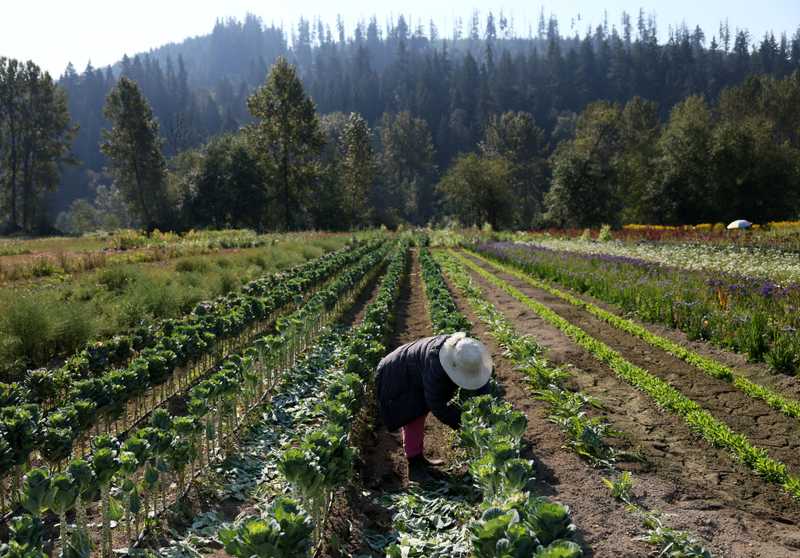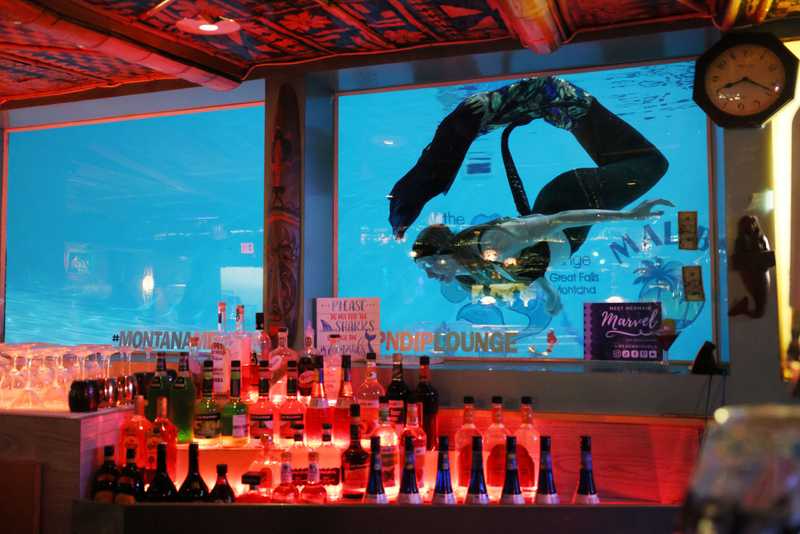Seattle team
Nov. 3, 2022
Who knew huckleberries were a real fruit?

WEST YELLOWSTONE, Mont. — Before he landed here for the summer, scooping ice cream and steaming cappuccinos just outside the entrance to Yellowstone National Park, Mustafa Ceren was not familiar with the huckleberry.
It did not take long for him to grasp the critical importance of the elusive fruit.
“Vanilla, chocolate, huckleberry,” the affable 23-year-old declared through the window of his takeout ice cream stand. “That’s the classics.”
No one born east of the Mississippi would agree; indeed, it is questionable how many easterners would even recognize the huckleberry as a real thing. (I confess that for years — many years — I thought “huckleberry” was a cute country nickname for some familiar fruit, like raspberry, or a catch-all term for a jumble of mixed berries.)
But here, in the gateway to the Great Northwest, the huckleberry is both real and king — a finicky, mercurial king who refuses to grow in captivity and thrives only in precise alpine conditions.
A century of efforts to tame it have failed. Turf wars have broken out over coveted, productive swaths of its habitat. And as the frozen product fetches $30 per pound on Amazon, the huckleberry exerts a magical pull on the customers who line up outside Espresso West.
First there are the tourists, who have no clue.
“They ask, ‘What is it?’” said Ceren, a native of Turkey who worked 70-hour weeks all summer at two competing ice cream stands a block or two apart, saving money before resuming his travels. “I say it’s like a tastier version of blueberry.”
Recent stories from the Seattle team
Nov. 4, 2022
Prayer, poetry, gardening — and security cameras. How the oldest synagogue in continuous use west of the Mississippi endures
Nov. 4, 2022
She launched a veggie and flower subscription service amidst a pandemic. But she says she’s not an entrepreneur.
Nov. 3, 2022
Mermaids in Montana, 600 miles from the ocean, may have saved their motor inn
Most cannot resist the lure of the unknown. Espresso West offers 15 ice cream flavors and stocks two large tubs of each — except for huckleberry, which requires four.
As if on cue, Joe Browder, a tourist from North Carolina, appeared at the takeout window. He had heard of huckleberries (“I guess there must be some around the Mississippi River somewhere,” he said, “because ‘Huckleberry Finn’”) but had never tasted one.
Undeterred by the 47-degree chill in the air, he ordered a scoop in a homemade waffle cone and pronounced it delicious.
The flavor seems to defy description, as the feisty fruit itself defies domestication; everyone I talked to perceived it differently.
“A little like black cherry,” was Browder’s take.
The second category of huckleberry lovers are locals, and their passion can be intense. Ceren was startled during his first week of work when a customer asked to buy an entire oversized tub of huckleberry ice cream out of the freezer. Unsure of the rules, Ceren demurred and offered a quart instead. The request turned out to be surprisingly common: A few days later, Ceren’s co-worker sold another customer a tub for $100.
But huckleberry ice cream is only the beginning. Over the course of three hectic days in Montana, Idaho, and Utah — without actually trying — I also encountered huckleberry taffy, mints, wine, chai, jam, honey, vodka, candy, and, I’m sorry to report, coffee. (I stuck with ice cream; my time in the west was dwindling and I needed to imprint the flavor on my memory.)
At Reed’s Dairy in Idaho Falls, which keeps its own herd of cows upstate, supervisor Austin McAffee swore the tastiest of the dairy’s special, limited-edition milk flavors is huckleberry. He likened the taste to boysenberry, another allegedly real fruit, which the Internet tells me is related to the loganberry and dewberry — whatever those are.
I was unable to judge huckleberry milk for myself; the flavor of the month for September was peach. But I did sample the dairy’s newest invention, an ice cream called “Chuck.” (Chocolate mixed with huckleberry. Obviously.) It is sublime, I discovered as I ate a cone outside in the parking lot, across the street from Ski’s House of Guns and a food truck run by young Thai immigrants.
This is the real reward of travel: to come to know the things you never knew you didn’t know — and realize that the things you thought you knew were wrong.
Back in Boston, I heard talk of an upscale Cambridge ice cream shop offering a huckleberry-and-shortbread concoction. My heart soared and sank, all at once: If every obscure berry can be had right here at home, what will be left for a traveler to discover?
I took comfort in the prognosis of Dan Barney, a longtime researcher at the University of Idaho who spent decades trying to domesticate the huckleberry for mass production — a quest shut down by budget cuts before he could achieve his goal.
“Call me back in 100 years,” he told a reporter in 2008, before relocating to Alaska to research the history of rhubarb.
Join the discussion: Comment on this story.

Credits
- Reporters: Julian Benbow, Diti Kohli, Hanna Krueger, Emma Platoff, Annalisa Quinn, Jenna Russell, Mark Shanahan, Lissandra Villa Huerta
- Photographers: Erin Clark, Pat Greenhouse, Jessica Rinaldi, and Craig F. Walker
- Editor: Francis Storrs
- Managing editor: Stacey Myers
- Photo editors: William Greene and Leanne Burden Seidel
- Video editor: Anush Elbakyan
- Digital editor: Christina Prignano
- Design: Ryan Huddle
- Development: John Hancock
- Copy editors: Carrie Simonelli, Michael Bailey, Marie Piard, and Ashlee Korlach
- Homepage strategy: Leah Becerra
- Audience engagement: Lauren Booker, Heather Ciras, Sadie Layher, Maddie Mortell, and Devin Smith
- Newsletter: LaDonna LaGuerre
- Quality assurance: Nalini Dokula
- Additional research: Chelsea Henderson and Jeremiah Manion
© 2022 Boston Globe Media Partners, LLC


